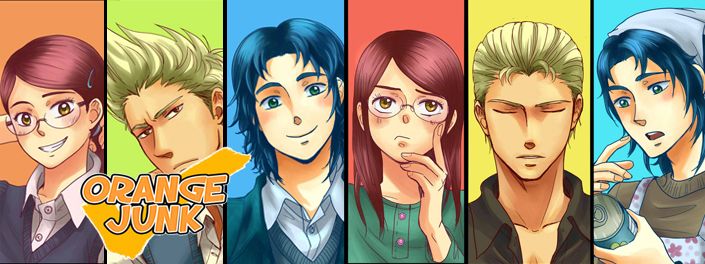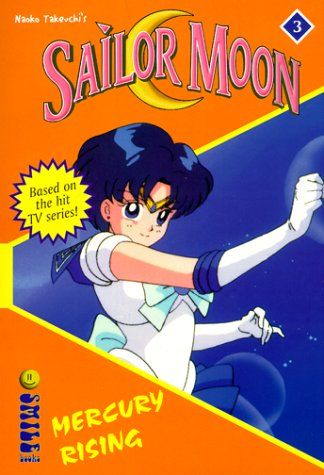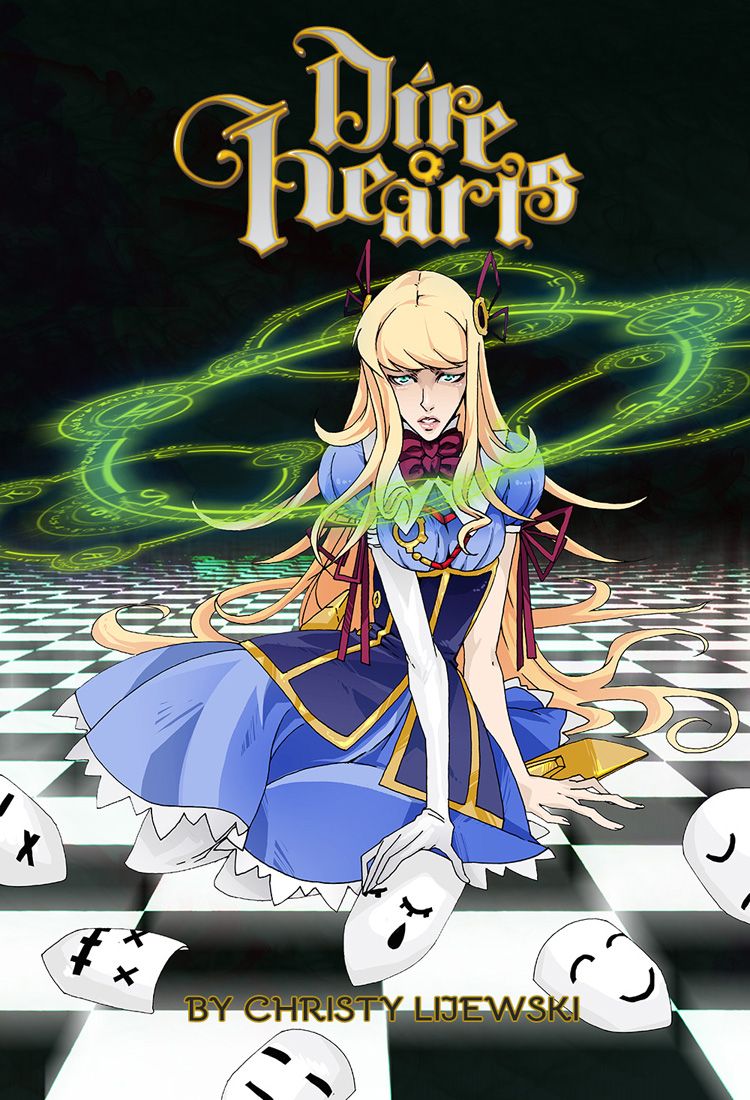Lianne Sentar is a member of the generation that came to comics through manga and stuck with it, moving from reading to creating to publishing. The author of Tokyo Demons, she was writing Sailor Moon novels for Tokyopop when she was still a teenager and later worked as an adaptor and editor.
Two years ago, Sentar teamed up with former Tokyopop senior editor Lillian Diaz-Przybyl and two other women to create Chromatic Press, an independent publisher of comics, fiction and audio dramas. Their flagship publication, Sparkler Monthly, is a digital magazine that is based on the Japanese model of serialized stories. They caught the attention of manga fans immediately by getting the rights to one of the best-regarded graphic novels from Tokyopop's global manga line, Jen Lee Quick's Off*Beat. Their lineup also includes Christy Lijewski (RE:play) and rem (Priscilla Hamby), who won the Japanese Morning International Manga Competition for non-Japanese creators. Jason Thompson just dedicated his weekly "House of 1000 Manga" column to an in-depth review of the magazine.
I've known Sentar for years online and met her in person two years ago at the Toronto Comic Arts Festival, shortly after Chromatic was launched. Whenever we talk shop, I'm impressed with how seriously she takes comics as a business. She and her colleagues work for love, yes, but for money as well: They are determined to make Sparkler Monthly a financial success, with paying creators as an integral part of the business model. This spring, they are running a membership drive in order to give the business more stability. Their goal is to line up 1,000 supporters, each of whom will pay $5 per month.
Brigid Alverson: Lianne, can you talk a bit about your background, how you discovered manga, and how you came to be a creator and editor as well as a reader?
Lianne Sentar: It was all through Sailor Moon; that ran on American/Canadian TV when I was 14. And as a lot of female or genderqueer geeks of my generation will tell you, that experience was about a lot more than a great show — it opened my eyes to the Female Gaze, and how things marketed to the monolith of "girls" didn't have to just be about fashion and shopping. Japan had developed such a broad definition of "what women want" in its anime and manga market, something Western cartoons and comics had barely touched upon. My mind exploded with imagination.
I wrote Sailor Moon fan fiction and devoured any manga and anime I could get my hands on, especially the shojo. When I was 17, I wrote to Tokyopop (then publishing the Sailor Moon manga) and criticized an advertisement they had for upcoming "children's novelizations" of the anime, telling them they needed to hire a fan fiction author if they wanted quality work. They invited me to apply, they found out I was in high school, and BAM — got the job. It was a fun gimmick to hire a teenage girl to write for other girls, I think. That job was a springboard into other writing and editorial work, and I've been a freelance adaptationist in the translated manga/light novel industry ever since (15 years now).
I've heard it said that the generation that grew up on manga is interested in making their own manga but not reading the work of other non-Japanese creators. Has that been your experience? And if so, what needs to happen to build support for these new comics?
I think that was pretty common in the Manga Boom, but I also think it was the result of weirdly conflicting marketing to that readership at the time. In the case of Tokyopop, they were marketing their translated manga as "authentic," since they were selling the unflipped books in their original right-to-left format (cheaper to produce, didn't mess with artwork as much) and it wasn't heavily edited for a Western market, like a lot of imports had been in the past. So there was this big push to buy and appreciate unmodified work from Japan, which is great, but simultaneously gave rise to a readership that wanted "pure" manga, not the "Westernized crap." (Elitist "purists" are common in fringe consumer cultures in the West.) Then, at the same time, Tokyopop started producing Original English Language (OEL) manga by mostly Westerners, and marketing it to the same readership! And you can't get less "authentic manga" than something that was made outside of Japan and never published in Japan, right? So the purists howled about it, the Western market didn't really know what to do with it since it didn't really understand manga outside of "it's selling a lot right now," and, quite frankly, the quality wasn't that high on the first crop of OEL titles, because even Tokyopop and the creators were figuring it out.
These days, there's an entire generation of kids who were raised on the Internet, who read webcomics and watch Marvel movies and get manga wherever Google sends them (including pirate scanslation aggregators). They consume a ton of stuff constantly from all over the world, and they don't always know where it came from or whom it was being made for...and I don't think they care. They like what they like. This is why self-published webcomics in bizarre formats and styles can really thrive online, faaaaar away from the mainstream print industry.
So, to answer your question: the frankly stupid "global manga isn't real manga, so it's instantly garbage" mentality is dying, because it was a product of a particular time and the limits of the print industry's distribution and related marketing. Support is growing for global comic creators who can work in any format—including a strongly-inspired manga style — but it's almost entirely online, and it's in a digital marketplace that has its own rules. That's where a lot of those non-Japanese, manga-style creators are (rightly) working right now.
Speaking of which: There's a strong manga influence in Sparkler. Do you call it OEL manga or do you have a different term?
We have a somewhat unusual product and work with very different markets, so we have different ways of explaining it. For people who know what the heck OEL/global manga is, especially those who were disappointed to see it kinda fizzle after Tokyopop's attempts, yes, we call most of our comics "OEL/global manga," because that's a good blanket term for serialized black and white comics that embrace the general Japanese manga storytelling style. (Also, our first comic was a rescued OEL license.) But we work in a lot of formats, and we just introduced our first color comic (with a second one coming soon)...so we also use the more general term "comics," since people don't normally associate color with manga. Again, we use a number of interchanging terms, depending on the situation.
But one thing: our publishing model is based strongly off of models used in Japan for manga and related geek industries (light novels and audio dramas). We love the way the Japanese industry publishes manga and think the Western comics industry could learn a lot from it.
Getting away from that part of it, you have a variety of different media in Sparkler Monthly — illustrated novels and audio drama as well as comics. Why did you decide to go for that mix, rather than stick to one medium?
We're digital, so sticking to one print-optimized format seemed like a waste of potential — and possibly dangerous for our longterm survival, if we were trying to replicate the print industry while circumventing a lot of their infrastructure. Also, again, Japan uses the audio drama and light novel (illustrated, serialized, pulpy prose) formats really well, and Western fiction barely touches those formats, so we wanted to give them a chance. They're fantastic formats.
In terms of content, types of stories, what sort of a balance are you looking for?
Female Gaze fiction for ages 15+ is our general core, since that's the target demographic for our magazine, and we want to give our readers stuff that's thematically tailored for them. We also need stuff that's legitimately exciting, emotionally charged, and at least baseline inclusive. We try to run a mix of different but complementary stories alongside each other, and we have the unofficial policy that at any given time, at least half the main characters in the magazine need to be female. We don't want to fall into the Female Gaze trap in a lot of circles (both here and abroad) where fiction for women is mostly handsome dudes with sexual tension. Like, that's great, but a Female Gaze publisher also needs to explore the lives of women!
What do you think are the strengths of Sparkler? What do you want to improve?
I think our content is fantastic, honestly. We've been blown away by the quality, the willingness to work, and the passion we're getting from our creators, some of whom are very early in their careers (although you wouldn't guess it, seeing how mature their work is). Sparkler fiction is hard to put down once you start reading, and our readership is so enthusiastic about us and sample all kinds of things they didn't think they'd like—just because we're publishing it and they trust us.
But we really need to get better at selling it. Our readership is very small, and reaching outside of it to get new readers — even just to tell more people that we exist—has been a daunting task. The web market is very different from the print industry, and the tools and expectations change, like, monthly. It's a fast-moving, complicated market to work in, so we're learning more every day.
Unlike a lot of independent publishers, Sparkler pays its creators an advance. Why did you choose to do that?
Two reasons: 1) To show that we're trying to be a serious player in the publishing industry, so we're going to provide the traditional investment expected of a professional publishing house; and 2) creators have to eat!
Our advances are modest, but we're getting great work in exchange, and I think we have a good level of trust with our creators because of it. Unfortunately, those advances are hard to afford, especially since our membership sales (which is how we afford them, like a collective Patreon) are well below where they need to be. When memberships don't sell well, our advances shrink or might even disappear, the magazine scales back the amount of content, etc. That's why we promote memberships so hard—they're the lifeblood of keeping everything running, both in our company and in our creator's lives.
It has been two years since Sparkler launched. What have you learned in that time?
What haven't we learned, usually the hard way? Ebook sales don't seem to cannibalize paperback sales or vice versa, so it's worth doing both. Webcomics have a more organized (if fragmented) industry than I realized, and it's very different from the print industry. The mainstream Western comics industry has boxed out incredible talent because it's so limited in what it wants, and those comic artists are working magic online ... There are a TON of them, and they're changing the culture of comics in a big way.
Also, if you really reach out to a community in a positive, encouraging way, even if you're doing it as a business, it can be returned tenfold. We've had readers spending hundreds of dollars on memberships to just give away on their blogs, hoping to bring our numbers up. We've read passionate screeds about how supporting Sparkler Monthly is the way to make the comics industry healthier. It's very humbling.
Who do you think your audience is, and how are you reaching them, by which I mean both how are you marketing Sparkler and how are they reading it?
We've done some data collection on this, and right now, our "average" reader is a woman in her mid-20s. We market through web ads, many of which are on other webcomics, and we hire a lot of different creators who often have their own audiences (which are usually similar to ours). Once a reader hears about us and is interested, we keep her updated through multiple kinds of social media, a robust newsletter, daily site updates, etc. It's really a 24/7 outreach process.
Looking to the future, what are your goals for the subscription drive and how did you arrive at them?
We've been pretty transparent on our site about why we need that paying membership—the steady revenue is mostly spent on advances for the creators, and it's how we judge exactly how much content we can run (and how much content we can pack into what members receive for that $5/month). If we get 1,000 active members, we'll be on relatively steady ground; if we get 2,000, we'll be on comfortable ground and can expand into video games, which we've worked on before but put on the backburner until the magazine is stable.
Our goal is to at least hit that 1,000 mark by the end of Year 2 (July) in order to have a Year 3 ... and the numbers have been pretty low. We still have four months to get them up, so we're doing everything we can to get the word out. We recently made our back issues free to read (at least $30,000 worth of material) so our product can really speak for itself now—people can read our archives for weeks before they decide whether it's worth $5 a month to keep it coming. And that $5 a month keeps over a dozen people employed (mostly women) and funds 80 to 100 pages of new content along with up to 30 minutes of audio every month...which is a system we hope to keep alive in this industry for a long time.



